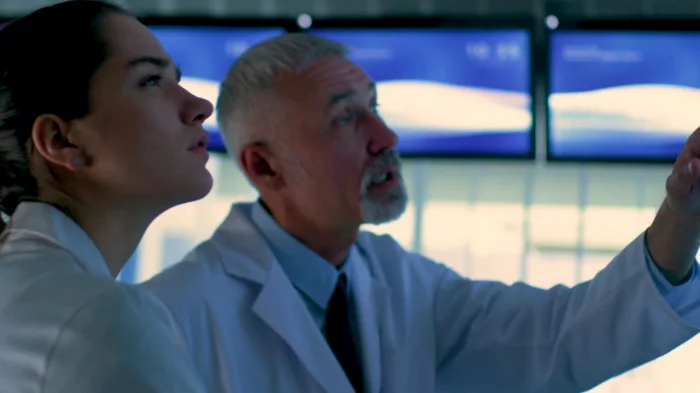Analyze Content


Current Procedural Terminology (CPT®)
AMERICAN MEDICAL ASSOCIATION - AMA
The American Medical Association (AMA) is the powerful ally for physicians and the promise of higher quality health care. The AMA develops the Current Procedural Terminology (CPT®) code set.
Chicago, Illinois, United States
Healthcare
Products & Services
People
News
Other
About
Products & Services
What makes RVUs so important to CPT content?
American Medical Association - AMA
The American Medical Association has developed a two minute video introduction to the value of Relative Value Units (RVUs), a key element of the Current Procedural Terminology (CPT®).
The CPT Editorial Panel
American Medical Association - AMA
What is CPT? The Current Procedural Terminology (CPT®) codes developed by the American Medical Association (AMA) are the language of medicine and the code to its future. This video gives you the meaning of CPT and the CPT Editorial Panel.
Current Procedural Terminology (CPT®) International
American Medical Association - AMA
See how the CPT® code set enables health systems outside of the U.S. to elevate patient outcomes, manage costs and improve productivity to expand access.
Implementation Framework
American Medical Association - AMA
The American Medical Association developed the Current Procedural Terminology (CPT®) Implementation Framework to support the understanding and successful adoption of CPT content. The downloadable Educational Handbook that explains the Framework is a resource to assist all audiences -- including leaders, teams, and individuals.
CPT® International
American Medical Association - AMA
IMPROVES OUTCOMES
CPT codes drive standardization, interoperability and transparency to improve the quality of care.
INCREASES ACCESS
Modern and digitalized CPT codes help coordinate care, increase engagement and widen access to care.
LOWERS COSTS
Standardized measurement unlocks efficiencies, informs predictive analytics and helps planning and managing resources.
CPT codes drive standardization, interoperability and transparency to improve the quality of care.
INCREASES ACCESS
Modern and digitalized CPT codes help coordinate care, increase engagement and widen access to care.
LOWERS COSTS
Standardized measurement unlocks efficiencies, informs predictive analytics and helps planning and managing resources.
People
News
Transforming healthcare: How the CPT code set is enabling value-based care
At a time when healthcare costs have become a sustainability concern globally, value-based care has emerged as a path to address future healthcare challenges while maintaining a focus on improving patient outcomes. In the UAE, the Dubai Health Authority’s (DHA) Dubai Health Insurance Corporation (DHIC) announced last year the launch of a first-of-its-kind value-based healthcare model for the Emirate, jumpstarting a new era in healthcare services.
07 Jan 2025
Telehealth in the UAE: Medical codes created by the American Medical Association offers support
The Covid-19 pandemic has brought about many changes in the way we live and do business, and in the different sectors of the global economy, such as aviation, healthcare and real estate. Within healthcare, the UAWE government has pushed the needle with telehealth policies as it instituted stay-at-home orders during the lockdown last year. While millions of patients had to stay away from their physicians to stay safe, it accelerated the increased digitization of the healthcare industry, especially the use of telehealth services, that have included telediagnosis, telecounselling; telemedical interventions; teleconsultation; teleprescription; and telemonitoring.
Since April last year, hospitals and clinic call centres across the UAE have been flooded with patient queries. In September, for example, the Abu Dhabi Telemedicine Centre (ADTC) revealed a 2,000 per cent rise in the number of calls received since the start of the pandemic. As a result, healthcare providers have been ramping up their telehealth and telehealth capabilities.
Telehealth is a gateway to how healthcare will be delivered in the future and has enabled the transition to consumer-centric care paradigms. Because of the need to create social distancing in a safe environment and the introduction of reimbursement for virtual visits, telehealth has become an important communication and treatment tool during the Covid-19 pandemic.
However, new ways to deliver health care can face some hesitancy from some patients and doctors, and fully adapting a national health care system to new technologies and processes brings new challenges. Questions about the costs, administration and related coding and billing needed to be understood.
“Even before COVID-19, there was some hesitancy adopting telehealth services in the region, said Dr. Osama Elhassan, co-founder and the vice-chair of Emirates Health Informatics Society and Health Informatics Specialist at Dubai Health Authority. “We had to get the right digital frameworks in place so that we can ensure the quality of telehealth platforms, the flow of reimbursement processes, and also address privacy and security when using those platforms.”
Since April last year, hospitals and clinic call centres across the UAE have been flooded with patient queries. In September, for example, the Abu Dhabi Telemedicine Centre (ADTC) revealed a 2,000 per cent rise in the number of calls received since the start of the pandemic. As a result, healthcare providers have been ramping up their telehealth and telehealth capabilities.
Telehealth is a gateway to how healthcare will be delivered in the future and has enabled the transition to consumer-centric care paradigms. Because of the need to create social distancing in a safe environment and the introduction of reimbursement for virtual visits, telehealth has become an important communication and treatment tool during the Covid-19 pandemic.
However, new ways to deliver health care can face some hesitancy from some patients and doctors, and fully adapting a national health care system to new technologies and processes brings new challenges. Questions about the costs, administration and related coding and billing needed to be understood.
“Even before COVID-19, there was some hesitancy adopting telehealth services in the region, said Dr. Osama Elhassan, co-founder and the vice-chair of Emirates Health Informatics Society and Health Informatics Specialist at Dubai Health Authority. “We had to get the right digital frameworks in place so that we can ensure the quality of telehealth platforms, the flow of reimbursement processes, and also address privacy and security when using those platforms.”
20 Jan 2023
Standardized medical procedure codes support health care insurance programs across the Gulf region
The scale of health care demand in the Gulf Region has increased drastically over the last decade. Annual health insurance claims in the Emirate of Abu Dhabi show that utilization of health care services increased 99.3% between 2011 and 2020—and this was before the COVID-19 pandemic accelerated demand even further.
To successfully manage this continuing rise in demand, governments across the region are seeking to implement innovative, resilient and sustainable practices in public health and medicine. To achieve this, several governments have deployed standardized Current Procedural Terminology (CPT®) content from the American Medical Association (AMA) in order to unlock greater efficiencies for local health care insurance programs.
In 2022, the Capital Market Authority (CMA) in the Sultanate of Oman selected the CPT code set to support the newly launched electronic platform that automates the administration of Dhamani, a new mandatory national health insurance system. Similarly, the Department of Health – Abu Dhabi (DOH-AD) and Dubai Health Authority (DHA) in the United Arab Emirates have been using standardized CPT codes since 2011 to help streamline communications and reporting analytics within their entire heath care ecosystems. CPT serves as a common language that uses consistent and standardized procedural codes to enable communication between patients, health care providers, and private and public insurers to support each country’s reimbursement network and its government regulatory role.
Furthermore, the use of standardized CPT codes in the Gulf Region has enabled increased automation and efficiency through integrated digital systems such as eClaimLink established by Dubai Health Authority, Shafafiya by the Department of Health - Abu Dhabi and the Dhamani platform supporting the population of the Sultanate of Oman. Insurers, health authorities and medical practitioners in this region have a structured reimbursement system that enables the pre-approval of treatment more efficiently for patients -- encouraging greater access to treatment as demand for more care continues to grow.
The implementation of integrated systems and CPT codes enable health ministries to manage and monitor the localized payment rates for each medical procedure regardless of the care setting. Most CPT procedural codes are linked to Relative Value Unit (RVU) data, which offers an objective measurement of the resources required to perform a medical procedure. Based on the principle that payments for physician services should correlate directly with the resource costs for providing those services, the RVUs for CPT codes are updated regularly to support the modernization of medicine. The RVUs linked to CPT procedures enable health care professionals to combine the time, intensity and cost of care into single relative ranking scale for payment. These relative values are then converted locally by health ministries to support their goals of sustainably managing health care costs. To understand more about how RVUs deliver value to health systems, please watch this short two-minute video.
Governments across the Gulf Region rely on a globally recognized, evidence-based CPT code set that keeps pace with modern medicine. The CPT code set continues to serve the evolving needs of data-driven health systems of the Gulf Region that aim to innovate while controlling costs, improving quality and increasing access to care. CPT content helps maintain the affordability of healthcare services as governments expand and adopt innovative practices in public health and medicine, supporting them in their vision of building sustainable, resilient health care systems. The implementation of CPT code sets has supported the Department of Health – Abu Dhabi in driving innovative health care solutions such as supporting the Malaffi platform with the delivery of COVID-19 testing and vaccine codes to enable medical and governmental agility during Abu Dhabi’s COVID-19 pandemic response.
To successfully manage this continuing rise in demand, governments across the region are seeking to implement innovative, resilient and sustainable practices in public health and medicine. To achieve this, several governments have deployed standardized Current Procedural Terminology (CPT®) content from the American Medical Association (AMA) in order to unlock greater efficiencies for local health care insurance programs.
In 2022, the Capital Market Authority (CMA) in the Sultanate of Oman selected the CPT code set to support the newly launched electronic platform that automates the administration of Dhamani, a new mandatory national health insurance system. Similarly, the Department of Health – Abu Dhabi (DOH-AD) and Dubai Health Authority (DHA) in the United Arab Emirates have been using standardized CPT codes since 2011 to help streamline communications and reporting analytics within their entire heath care ecosystems. CPT serves as a common language that uses consistent and standardized procedural codes to enable communication between patients, health care providers, and private and public insurers to support each country’s reimbursement network and its government regulatory role.
Furthermore, the use of standardized CPT codes in the Gulf Region has enabled increased automation and efficiency through integrated digital systems such as eClaimLink established by Dubai Health Authority, Shafafiya by the Department of Health - Abu Dhabi and the Dhamani platform supporting the population of the Sultanate of Oman. Insurers, health authorities and medical practitioners in this region have a structured reimbursement system that enables the pre-approval of treatment more efficiently for patients -- encouraging greater access to treatment as demand for more care continues to grow.
The implementation of integrated systems and CPT codes enable health ministries to manage and monitor the localized payment rates for each medical procedure regardless of the care setting. Most CPT procedural codes are linked to Relative Value Unit (RVU) data, which offers an objective measurement of the resources required to perform a medical procedure. Based on the principle that payments for physician services should correlate directly with the resource costs for providing those services, the RVUs for CPT codes are updated regularly to support the modernization of medicine. The RVUs linked to CPT procedures enable health care professionals to combine the time, intensity and cost of care into single relative ranking scale for payment. These relative values are then converted locally by health ministries to support their goals of sustainably managing health care costs. To understand more about how RVUs deliver value to health systems, please watch this short two-minute video.
Governments across the Gulf Region rely on a globally recognized, evidence-based CPT code set that keeps pace with modern medicine. The CPT code set continues to serve the evolving needs of data-driven health systems of the Gulf Region that aim to innovate while controlling costs, improving quality and increasing access to care. CPT content helps maintain the affordability of healthcare services as governments expand and adopt innovative practices in public health and medicine, supporting them in their vision of building sustainable, resilient health care systems. The implementation of CPT code sets has supported the Department of Health – Abu Dhabi in driving innovative health care solutions such as supporting the Malaffi platform with the delivery of COVID-19 testing and vaccine codes to enable medical and governmental agility during Abu Dhabi’s COVID-19 pandemic response.
20 Jan 2023
Other Info
About CPT | CPT® International
American Medical Association - AMA
The CPT code set streamlines communication across health care settings and informs the advanced analytics on medical procedures and services. Governments, health care providers, tech vendors and payers utilize the CPT code set within their health management systems. CPT coding is trusted to support payment processes and inform public health planning and research.
Introduction Brochure
American Medical Association - AMA
About
The American Medical Association (AMA) is the powerful ally for physicians and the promise of higher quality health care. The AMA develops the Current Procedural Terminology (CPT®) code set - a comprehensive, standardized language that empowers health systems to improve quality, increase access, and lower costs. Constantly updated and trusted for more than 50 years, the CPT code set enables innovative clinical practices that support the modern delivery of care.
CPT is the language of medicine today. The code to its future.
Products and Services: current procedural terminology (CPT) medical code set / medical code set / CPT / health information / procedural terminology
CPT is the language of medicine today. The code to its future.
Products and Services: current procedural terminology (CPT) medical code set / medical code set / CPT / health information / procedural terminology
Add Attachment

Share
Recent Chats
Share via email
Future: handle WhatsApp here
Future: handle LinkedIn here
Future: handle Twitter here
SUBMENU HERE
Share via Chat
Copy Link


